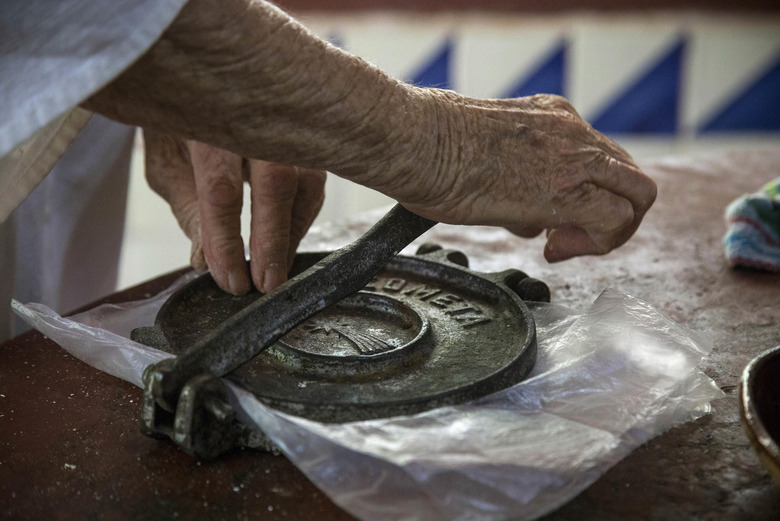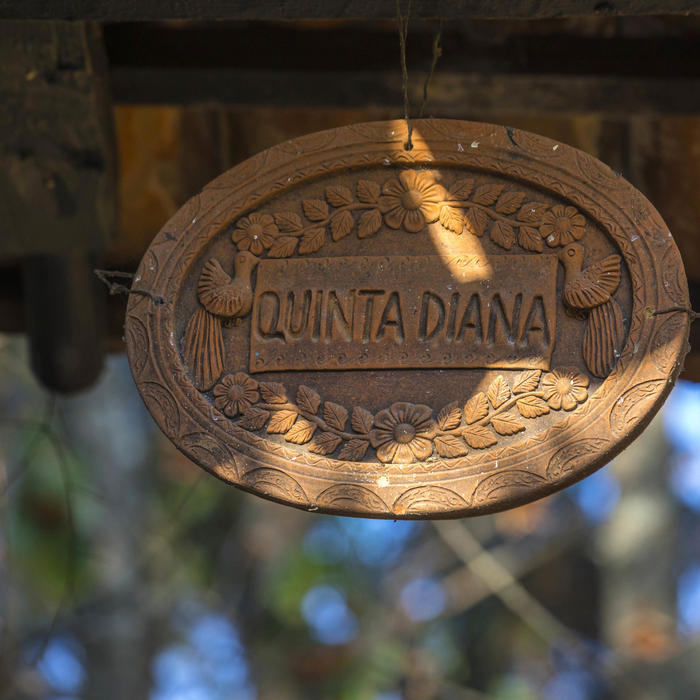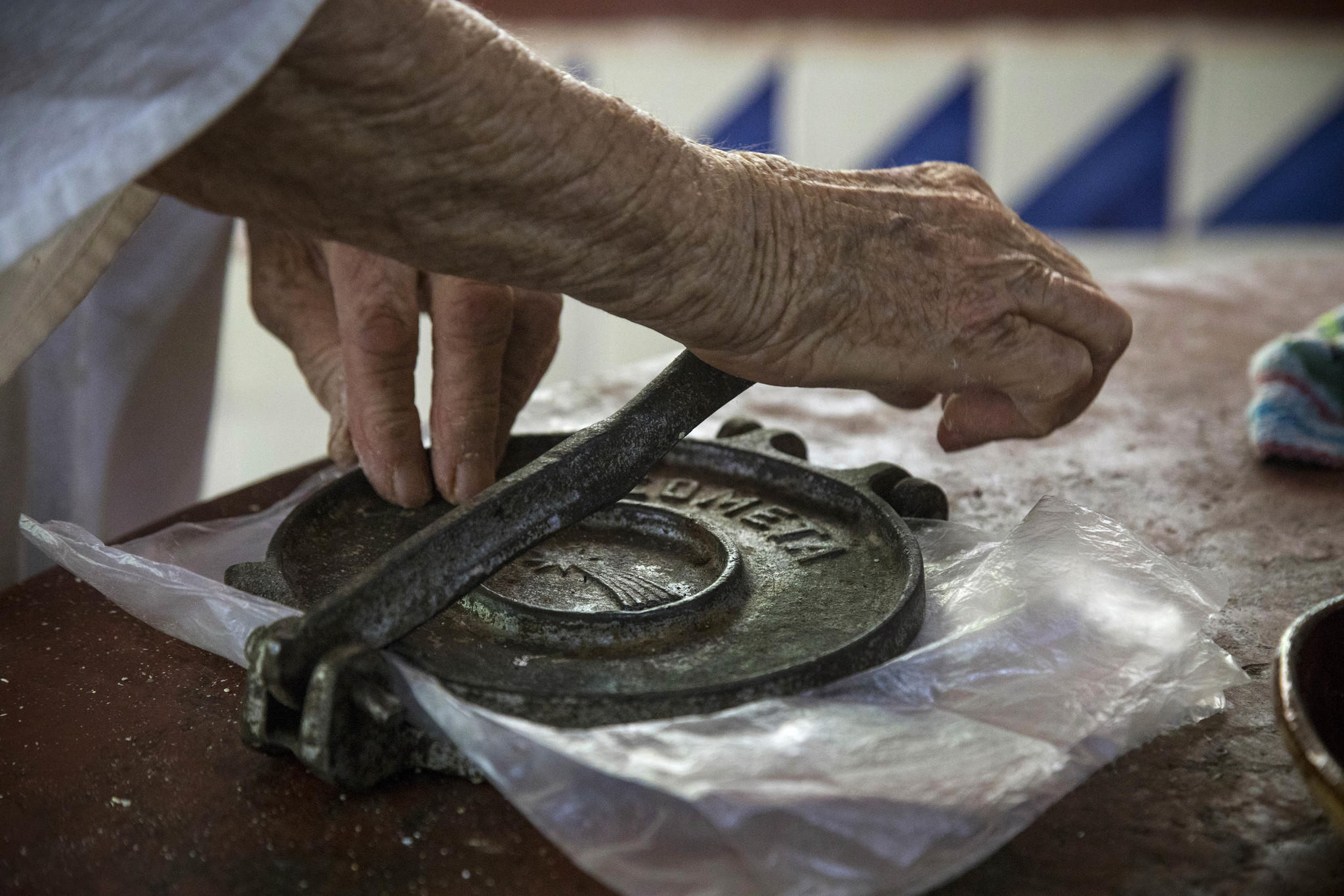At 95, Mexican Food Expert Diana Kennedy Is Growing Her Own Coffee And Making Her Own Tortillas
To get to Diana Kennedy's house, outside Zitácuaro, Mexico, about 100 miles west of Mexico City, you go up a dirt road jutted with rocks, through two gates, past rock walls overhung with bougainvillea and blue plumbago, pink lilies and darting butterflies, and up a flight of stone steps to an outdoor patio that features two adobe beehive ovens and two solar stoves, one lately arrived from Spanish chef José Andrés, who also sends them to disaster zones.
Kennedy, the British-born 95-year-old expert on regional Mexican cooking and author of almost a dozen groundbreaking cookbooks, does not live in a disaster zone but rather the small village of San Francisco Coatepec de Morelos, up a cobbled road from a 16th century Franciscan church, in an "ecological house," which she had built in the late 1970s with recycled materials, salvaged 200-year-old wooden beams and handmade adobe. The disaster zone, as Kennedy sees it, is rather what we've made of the world, fraught with pollution, climate change, an exploding population and disappearing resources. And it is what Kennedy, nearing 100, is focused on, as she continues working: teaching classes and editing her books, cooking, of course, and just going about her daily life.
"This is trabajo," Kennedy says forcefully, her expressive face mapped by laugh lines, her short, white hair tucked into a pastel scarf and a broad straw hat. "Life is not easy here; there's no Walmart around the corner." Daily life often consists of making coffee, which for her means picking, fermenting, drying and roasting the organic beans she grows herself. Kennedy grows much of her own food at Quinta Diana, her name for the three hectares of land around the house, which also has a garden with some 250 plants, a small house for overnight guests, a chicken coop, two beehives and a small forest of the trees she planted when she first bought the land. "This was a dried up cornfield when I bought it."
Through the patio doors is Kennedy's kitchen, which is built around what she calls not an island but a peninsula, a counter jutting out from a rock wall — the house is built onto solid rock and around a boulder, now at the bottom of the staircase, that Kennedy calls "her hatrack" — with gas burners, tiles from Michoacán and an enormous copper hood she got in Guanajuato. Jars of homemade vinegars line the windowsill like at an apothecary shop. Baskets hang from medieval-looking metal hooks that she had made by a local craftsman; sometimes they're filled with chiles, sometimes with tins of tea. (Kennedy, as she'll tell you, grew up in wartime England, which imprinted her with a respect for both tea and poverty.) Cazuelas, the ceramic Mexican cooking pots, are stacked on the floor next to her round kitchen table, also constructed from old salvaged beams. Another wall, behind an iron wood-burning stove used for heating rather than cooking, is hung with copper pots and a framed photo taken at Craig Claiborne's 60th birthday party.
It is the late Claiborne, a longtime editor and restaurant critic of the New York Times and author of many game-changing cookbooks himself, whose presence fills the kitchen as much as anybody's. He was the one who suggested that Kennedy start teaching cooking classes in the first place.
Go back more than half a century: In 1953, Kennedy left England for Toronto, where she got a series of jobs ("at one point, I was selling lamps") and then, after meeting New York Times foreign correspondent Paul Kennedy on a trip to Haiti, she followed him to Mexico, where they married. During the years the couple lived in Mexico City, where her husband was based, Kennedy became fascinated by the local food, cooking it and researching the recipes and techniques. The couple eventually moved to New York City, and after the death of her husband from cancer, Kennedy was championed by Claiborne, who wrote about her cooking classes, and she soon got a book deal at Harper & Row. And then, Kennedy says now, "One day I thought, 'Why am I still in Manhattan? I should be in Mexico.'"
So she came back, and into the house in Michoacán where she's lived for almost 40 years. "You cannot take this without context," says the woman who sleeps with a loaded pistol under her pillow. "It's important to talk about what I do here." The issue of sustainability, on-trend now, is something Kennedy has been living and practicing for much of her long life. She uses electricity only when necessary, reuses any plastic (like the bags she uses to press tortillas) multiple times, filters all the water (she allows only neutral soaps) used at Quinta Diana for irrigation. "Everybody is responsible," Kennedy says vehemently. "Everybody. At all stages."
And then there is her responsibility to the cuisine, which has earned Kennedy honors: Mexico's Order of the Aztec Eagle and membership in the Order of the British Empire. (Prince Charles once came for lunch at Quinta Diana; Kennedy notes how much he loved her candied Jalisco green mangoes.)
"You be as authentic as you can," she says of the cuisine she's devoted her life to documenting. "The first Mexican food I ever had was in Los Angeles." Kennedy appreciates the irony, if you can call it that, of a woman who speaks British-accented Spanish teaching traditional Mexican techniques. "Who was I to say? I looked as if I'd dropped out of Mars.
"I've driven all over the country," Kennedy adds, nodding in the direction of her third consecutive pickup truck, a 17-year-old stick shift white Nissan parked under an awning, which she still drives (her license expires when she turns 100). "I spent months up in the mountains, sitting in kitchens."
This dedication to accuracy gives her little patience for those who do not meet her standards or follow the recipes she's translated from those rural Mexican kitchens. Publications will change recipes to suit them, altering ingredients and techniques — a common and accepted practice, given the current cookbook copyright laws, which Kennedy longs to change to give more protection to recipe writers. "The difference between excellence and mediocrity is subtle," she says, after a day spent demonstrating how to make tortillas.
It was a process that began with a small bucket of local corn, which she simmered with lime, soaked and hulled — a sequence called nixtamalization — and then took to a tiny neighborhood mill, where it was ground, and then back to her kitchen, where it was pressed into disks of masa and then cooked on a comal. (Kennedy grows her own corn when there's enough rainfall, which there hasn't been lately; Michoacán doesn't have California's drought, yet, but she notes that this spring has been the driest and hottest she can remember.) To see every part of the process is an object lesson. Guacamole made in a molcajete, each ingredient mashed by hand; camarones enchipotlados, made with the season's first heirloom tomatoes and homemade chiles in adobo, the reduced sauce spooned over salted, perfectly cooked shrimp; a cup of coffee brewed with beans that had recently been fermenting in a bucket outside. The simplicity is deceptive, dependent on a vast architecture of sourcing and labor, timing and technique.
Kennedy sits in her kitchen, wearing a police whistle on a lanyard like a necklace for protection, a cup of tea before her. "Darjeeling may not exist soon," she points out, "because of climate change." She's been thinking about the future, not only of the planet but also of Quinta Diana, the house she's still in the process of turning into an ecological reserve and whose plants are cataloged at CONABIO, Mexico's national biodiversity website. She's approached universities about housing her papers and is working with filmmakers on a documentary. A new edition of her pivotal "The Art of Mexican Cooking" is in the works, plus a new Mexican edition of the massive "Oaxaca al Gusto," which took Kennedy 14 years to research and write. And she hopes to continue doing boot camps, the intensive cooking classes she runs from her house. "I'm off at 100," she says, although it's easy to imagine her outliving us all.
"It's about survival," Kennedy says. "And taste."


